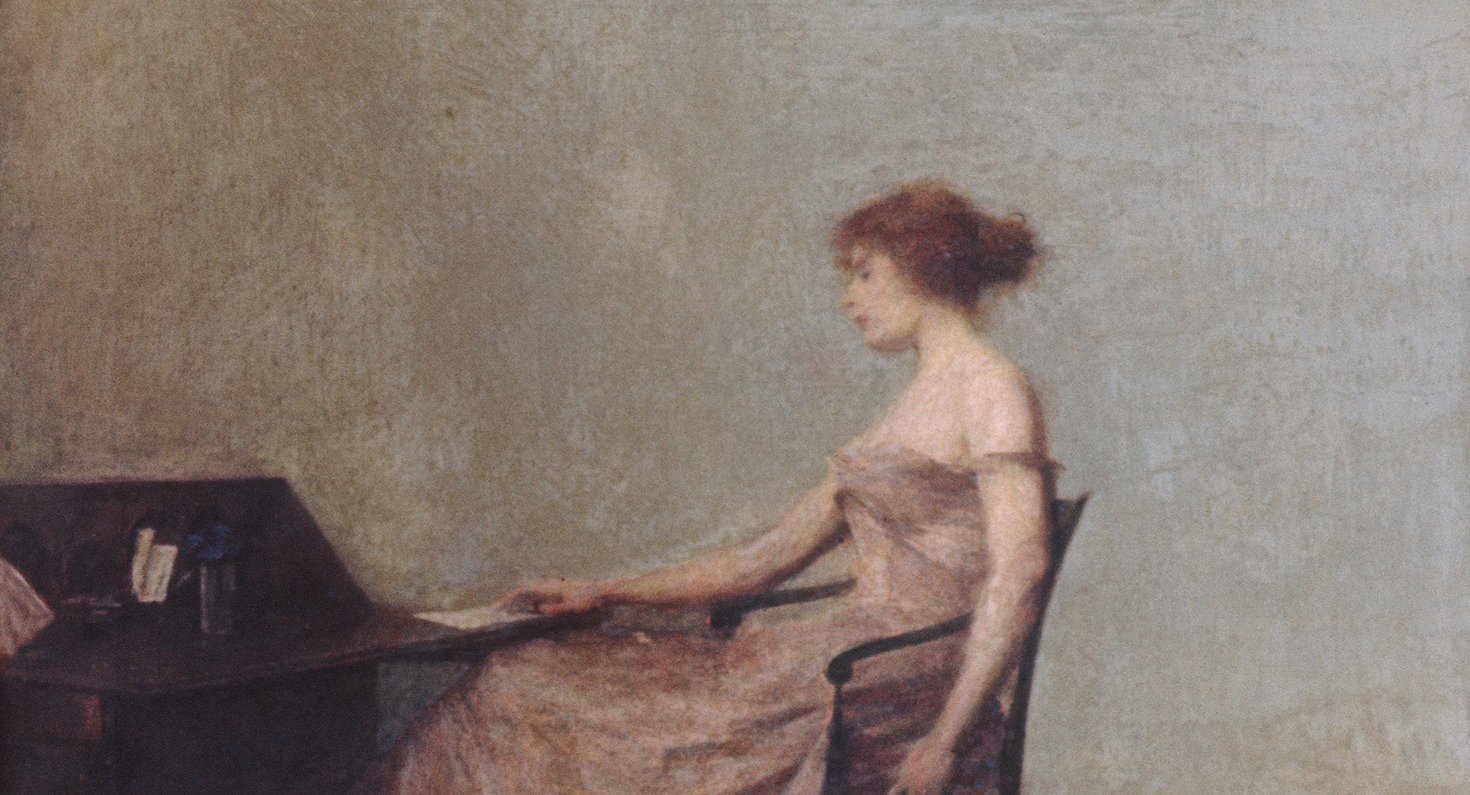
The Letter (detail), by Thomas Wilmer Dewing, c. 1895. The Metropolitan Museum of Art, Rogers Fund, 1910.
• So why is President Emmanuel Macron loaning the Bayeux Tapestry to the UK at this exact moment? “For the English, the tapestry will always represent the dilemma of how to rub along with our closest allies and oldest enemies across the sea: to live under their rules, or to go it alone.” (NewYorker.com)
• A perhaps unorthodox possible addition to Wikipedia’s "List of inventors killed by their own inventions” page: “Steininger usually kept his prodigious beard hair rolled up and stuffed in a pocket, but during the commotion he was running around with it hanging free. In the midst of the chaos, he managed to step on his own beard, sending him tumbling down a flight of stairs and breaking his neck. Killed by his own beard.” (Atlas Obscura)
• Looking at the city as a revolution factory. (The Nation)
• Mary Beard looks back on how she got to the point where newspapers were writing “cult of Mary Beard” stories: “‘I now think: Up yours. Up yours, actually. Because people’s careers go in very different trajectories and at very different speeds. Some people get lapped after an early sprint.’ She added softly, with a wicked grin: ‘I know who you are, boys.’” (The Guardian)
• Julia Ioffe asks Armando Iannucci about his new film, The Death of Stalin: “I’ve always been drawn toward filmmakers that take ambitious state-of-the-nation approaches. Before I made The Death of Stalin, I went back and I viewed Charlie Chaplin’s The Great Dictator—a satire of Hitler made in 1941, with hilarious scenes but also scenes about the Jewish ghetto. There is a tradition.” (The Atlantic)
• A visit to the editor of the Farmer’s Almanac, which is, somehow, still alive and attracting subscribers in its third century. (Topic)
• The story of the mysterious foul letters that led the local police to install a periscopic mirror at the mail drop in a tiny town in Sussex. (London Review of Books)
• From the archives: February 3 marks Henry Heimlich’s birthday. Here’s a profile of the man and his detractors from 2007: “A showman as much as a scientist, a brawler as much as a doctor, Heimlich was the P.T. Barnum of medicine—his career serving as testament to the fact that even the supposedly fact-based medical realm is susceptible to the phantom powers of personality and salesmanship.” (The New Republic)